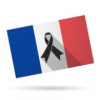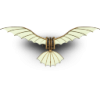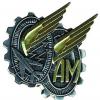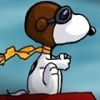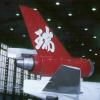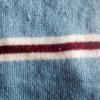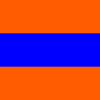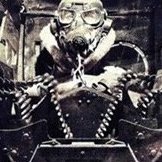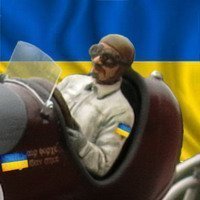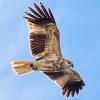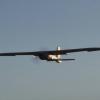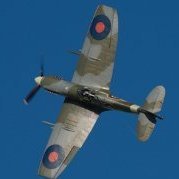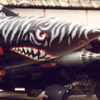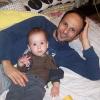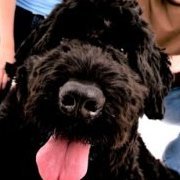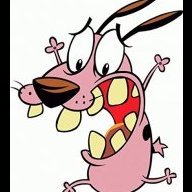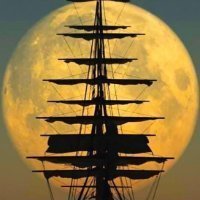Leaderboard
Popular Content
Showing content with the highest reputation on 24/12/16 in all areas
-
Hi all, just before Christmas I thought I'd post my last build of 2016, the brand new Airfix HP Victor Mk 2 and as it's just about my favourite aircraft I just had to have at it. I built this kit back in August in time for the latest issue of AMW (December) and as it was the first test shot it came with no box, instructions or decals, (kindly Simon Owen of Airfix managed to send me a PDF copy of the instructions before I started). The kit is very well designed though as I point out in the article there are a few issues with fit and some omissions specific to the Blue Steel equipped Victors such as the VCCP intake in the port wing root stub and small blister intakes either side of the fuselage above the wing roots but nothing that can't easily be dealt with.The engineering of the intakes is very cleverly done and makes painting them a breeze. Thanks also to that font of Victor knowledge Dennis Robinson (sloegin) whose detailed info particularly in regard to the proper B2 cockpit colours really helped out.The interior has a bit of scratch-building added but not too much, (seats, missing pilots side wall panels, rear side wall panels, etc). This model was finished as an early camouflaged B2 of the Wittering Wing during the centralized servicing period circa 1965. The camouflage demarcation lines were feathered and didn't wrap under the wings and tailplanes at this time, there were minimal warning markings with everything toned down, and the finish was more a high semi-gloss sheen than the later high gloss polyurethane. They didn't appear in this particular scheme for long and as such kept remarkably clean (even underneath), later on, of course, it was a different story. Some aircraft had the Wittering station badge applied to the port nose under the canopy but XH673 was one that didn't, right at the end of that period the Wittering lion appeared on the fin and wing tanks were fitted. I chose this particular aircraft because it was the first operational B2 to drop a Blue Steel, (100 squadron at Aberporth in 1967) plus I like the early scheme without the ugly wing tanks to mar the beautiful lines. Already got another well underway for our Bomber Command SIG and this will almost certainly be an early white B2 with the small fin root intake, lack of wing 'carrots' and refuelling probe, then a B(SR)2, a later Wittering B2, the Red Neck trials aircraft and.......you get the idea.... Thanks for looking hope you like it. Cheers and Happy festivities Melchie32 points
-
Blenheim MkIV of Free French GRB1 LORRAINE 1941 Kit Airfix Decals Xtradecal Paints Humbrol Trop Air Intakes Quickboost Instrument panels Yahumodels Build thread here http://www.britmodeller.com/forums/index.php?/topic/235009316-blenheim-mk-iv-grb-1-lorraine-north-africa-1941/ Patrice17 points
-
Background: The North American F-86 Sabre, sometimes called the Sabrejet, was a transonic jet fighter aircraft. Produced by North American Aviation, the Sabre is best known as the United States' first swept wing fighter that could counter the similarly-winged Soviet MiG-15 in high-speed dogfights over the skies of the Korean War (1950–1953). Considered one of the best and most important fighter aircraft in that war, the F-86 is also rated highly in comparison with fighters of other eras. Although it was developed in the late 1940s and was outdated by the end of the '50s, the Sabre proved versatile and adaptable, and continued as a front-line fighter in numerous air forces until the last active operational examples were retired by the Bolivian Air Force in 1994. Its success led to an extended production run of more than 7,800 aircraft between 1949 and 1956, in the United States, Japan and Italy. Variants were built in Canada and Australia. The Canadair Sabre added another 1,815 airframes, and the significantly redesigned CAC Sabre (sometimes known as the Avon Sabre or CAC CA-27), had a production run of 112. The Sabre was by far the most-produced Western jet fighter, with total production of all variants at 9,860 units. F-86F Uprated engine and larger "6–3" wing without leading edge slats, 2,239 built; North American model NA-172 (F-86F-1 through F-15 blocks), NA-176 (F-86F-20 and −25 blocks), NA-191 (F-86F-30 and −35 blocks), NA-193 (F-86F-26 block), NA-202 (F-86F-35 block), NA-227 (first two orders of F-86F-40 blocks comprising 280 aircraft that reverted to leading edge wing slats of an improved design), NA-231 (70 in third F-40 block order), NA-238 (110 in fourth F-40 block order), and NA-256 (120 in final F-40 block order); 300 additional airframes in this series assembled by Mitsubishi in Japan for Japanese Air Self-Defense Force. Sabre Fs had much improved high-speed agility, coupled with a higher landing speed of over 145 mph (233 km/h). The F-35 block had provisions for a new task: the nuclear tactical attack with one of the new small "nukes" ("second generation" nuclear ordnance). The F-40 had a new slatted wing, with a slight decrease of speed, but also a much better agility at high and low speed with a landing speed reduced to 124 mph (200 km/h). The USAF upgraded many of previous F versions to the F-40 standard. Source: https://en.wikipedia.org/wiki/North_American_F-86_Sabre Kit Manufacture: Italeri. Scale: 1/32. Type: Sabre Jet F86-F Extras used: Aires cockpit ans wheel well sets.. Paints and colours used: Primer was black Stynylrez. Paints used were AK extreme metal black base, aluminium, dark aluminium and jet exhaust. Tamiya XF-7, XF-69 and Vallejo interior green 71.010. Weathering: Flory Dark dirt clay wash.15 points
-
Hi! My little 'stang! Kit manufacture: Airfix Scale: 1/72 Type: North American P-51D Mustang Extras used: Scratch seat belts from tape . Paints and colours used: AK Xtreme Metals Aluminium, AK Dark Aluminium, AK Black Base Primer, Tamiya XF-7 flat red, XF-3 flat yellow, XF-85 Rubber black, XF-62 Olive Drab, Vallejo 71.010 Interior Green, various Vallejo colours for hand painting, AK Gauzy Agent, Flory Dark Dirt. So this is another kit I've been working on for another group build/SIG on another forums. It was all about metal finishes, and as I've never really attempted a true NMF, I thought I'd give the new excellent AK Xtreme Metals a go. The kit is a fantastic mojo-buster. Fit is generally excellent, detail is good, engraved panel lines are lovely. The only problems I had were a warped landing gear strut, so the wheel had to be superglued to the undercarriage door, and the antenna was so full of flash it was unusable and had to be scratched from plasticard. I'm fairly pleased with the result of the AK Xtreme Metal and I loved the AK Gauzy agent; self levels a treat and doesn't diminish the metal finish. I did have a problem at times with the AK stuff pealing away with the masking tape despite de-tacking and leaving the paint to dry for a week at a time. However it goes on a treat and looks beautiful. Comments, tips and feedback as always greatly appreciated. And here are my two latest completions hanging out with each other! There we go! Thanks for stopping by. Have a fantastic Christmas everyone, I hope Santa fills your stockings with plenty of kits! Val15 points
-
Hurricane IIc 43 Squadron RAF I used a 1/72nd AZ Hurricane IIc, Humbrol and Colourcoats enamels and, decals from a Xtradecal sheet. I've really enjoyed this Group Build, thanks to Jon & V-P for hosting it.15 points
-
Italeri 1/72 Ju-87 B2 Stuka Crete, May 1941 (Teutonic Minotaur – Bullish German from Crete!) Build thread here: Stuka Build15 points
-
This model represents a machine flown by Sgt. Maj. Kyushiro Ohtake, who flew four years in China and has the distinction of being sole pilot of the 25th Sentai to survive WWII. The Type 1 Army Fighter Ki-43 Hayabusa (Peregrine Falcon; also known by Allied reporting name 'Oscar") is in some ways a Japanese analogue to the Curtiss P-40, a type it engaged frequently in its combat service. Both machines were designed as expressions of an out of date concept of air fighting to which air service leaders remained deeply attached; both were built in large numbers, and kept in service for many years, even though they verged on obsolescence already when they went into production; both achieved solid service records which owed more to the quality of their pilots than their quality as fighting machines. The Imperial Japanese Army requested a replacement for Nakajima's earlier Type 97 within months of that fighter's going into production. The new design was to be faster, have a longer range, incorporate a retracting landing gear, and yet be every bit as manouverable as the earlier fighter .This Nakajima managed, albeit with a bit of fudging. Wing loading was kept down with incredibly tight weight management, but in the end horizontal manouverability could only be kept comperable to the earlier type by installation of 'combat flaps', which, at some cost to speed, greatly reduced turn radius. The paring of every structural element to lighten weight in the prototype led to damage at the wing roots of early examples once they were in service, and required a program of repair and revisions to further production. Even so, the Type 1 remained a very fragile machine. Later examples did receive some armor for the pilot, and 'bladder' style self-sealing fuel tanks, which helped somewhat. Armament was originally just the old Great War standard of two 7.7mm machine-guns, tucked under the upper decking; soon, one of these typically was replaced by a 12.7mm gun (referred to as an automatic cannon in Japanese parlance) which fired explosive rounds. Inadequate armament and a fragile structure left the pilot of a Type 1 only the recourse of extreme nimbleness. He had to avoid being hit at all costs, and could not count on delivering a solid blow when he had a firing position. Sgt. Maj. Kyushiro Ohtake was nineteen years old when he was assigned out of flight school to the 10th Independent Chutai in China, which was redesignated the 25th Sentai in November, 1942. The unit flew against the 14th Air Force, mostly from Hankow. Kyushiro Ohtake gained a name for himself as a man with keen eyesight, often first to sight enemy aircraft. He is credited with anywhere from 10 to 15 U.S. or Chinese aircraft destroyed, but Japanese tallies are odd and hard to set accurately; victories were ascribed to the unit, or even to the aircraft, rather than the individual pilot in official reports. But his reputation, as well as his survival for four years, suggest he was good at the work. At the very end of the war, the remnant of 25th Sentai was withdrawn to Korea, and two days before the war ended, Sgt. Maj. Kyushiro Ohtake was severely injured when his fighter was set ablaze over Seoul. He survived bailing out, but never fully recovered, and died of the lingering effects of his wounds in 1951. This model is based on a very widely circulated photograph of Sgt. Maj. Kyushiro Ohtake's machine. I have seen it captioned as being taken at dates ranging from 1943 to 1945, and as being taken at places ranging from Hankow to Nanking. I have no opinion on the matter, beyond that it was taken on a sunny day. I believe the original finish was a sort of 'snake-weave' in green, applied in the field over bare metal without any surface preparation, as was the practice of the IJAAF in the mid-war period. Some profiles show this machine with only bare metal on the fuselage in the region of the cockpit, but I think this is a misreading of the intense glare in the photograph at that area. The machine is probably a Ki-43-2, with a more powerful supercharged engine and slightly heavier structure, likely bearing the mixed armament of one 7.7mm and one 12.7mm. The finish is achieved by first covering the model in foil, then dabbing dark green paint on this, rubbing it down when dry with a 3000 grit polishing pad, and repeating the process. Fabric areas are painted a pale grey basic color, and the green left more dense, as paint adhesion was better on these. Markings are improvised: a white stripe and a narrower red stripe over it, dry transfer numbers on clear film applied, then the five 'adjusted' by brush to come closer to the picture's font. The model is the old 1/72 Hasegawa kit, in a training unit boxing. It was rescued from the 'cupboard of doom' after several years residence there. I intended it to be an OOB standard build, and varied from this only to replace a couple of items, a tail wheel broken off and lost heaven only knows when, and a radio mast that broke removing it from the sprue. The plastic seems to have gotten a bit brittle with age, the kit was old already when I got it. There were bad sink-marks on the trailing edge of the upper surface, which I eliminated by a combination of filling with CA gel, and serious sanding with cutting grit emery. In any case, as the panel lines were raised, I would have had to scribe the thing anyway. It is a nice old kit, and I would like to take a run at another one or two of them. I cannot praise the fit highly enough. I would swear you could almost have assembled the wings to the fuselage as a snap-fit, without even glue, let alone fillers, and the same with the cowling pieces and tail pieces. Note to the eagle-eyed: I have noticed since taking the pictures I omitted to attach the pitot tube in my hurry to have the thing done. Also, a little more embarrassing, I did not put the pilot's headrest/armor in before attaching the canopy. I don't do a lot of enclosed cockpits, and need to be in a 'zone' to tackle them. The moment was right, and I neglected to get the detail in first. For what it is worth, the canopy fit on this old kit was very, very good. I have also learned that I ought to have brought the yellow ID stripes closer to the wing roots.14 points
-
Hi Here is my last build : the 1/72 Special Hobby Mirage F1B N°515 with the special scheme for the 50th anniversary of FFAF Lorraine Squadron in 1991 (No342 Squadron during WWII). The kit is easy to build except around the engine intakes. This build has been published in the new French magazine "Avion de Combat" which is 60% modern military aviation news and 40% modelling Patrick13 points
-
G'day all, Thought I'd upload the shots of my finished Lincoln. Full build details at 1/72 RAAF Lincoln B.30 - Work in Progress - Aircraft - Britmodeller.com It's the 1980's Airfix Lancaster with the DB Models conversion bits (three kits in all - fuselage/wings, engines, propellers) and a heap of additional bits added. Not my best but it looks like a Lincoln in the cabinet.13 points
-
1/72 AZmodel Hurricane Mk. IID 6 Squadron Egypt 1942 Build thread: http://www.britmodeller.com/forums/index.php?/topic/235012204-172-azmodel-hurricane-mk-iid-w40mm-gun/13 points
-
My first build of the Zvezda 777. Its a superb kit with lots of details.The only problem I had was some warped parts. No idea if this is a common problem with this kit or if I was just "lucky" to get a "monday kit"...I have another one in the stash and and a quick glance it seems ok. The build itself is pretty straight and the overall fit of the parts is good. Paints used for this bird are Tamyia Pure White from a spray can,Testors Voodoo Grey for the wings and engines,and Testors metallics.Sealed as usual with Testors metallic sealer and polished with Tamyia Wax. The decal set for this special livery of Air New Zealand comes from PAS decals.They are very well done and they fit on the model without much trouble. The only problems are the cabin windows as they tend to disappear on the darker parts of the Hobbit decals.Here I had to use windows from my Doyusha 777-200 kit ( this kit is also up here in the RFI section) as they had silver frames around the windows which makes them better visible. The finished kit is huge and an impressive size comparison to the classic 747... Another nice addition to my fleet of special liveries. Cheers and on with the pics. And with my usual critic...Kitty Merry christmas to everyone...11 points
-
1/72 Revell Spitfire MkVb EP312 Bill Kain Pavia aftermarket filter and decals Paints - Xtracrylix and Vallejo, watercolor weathering.10 points
-
Hello folks, here is my second built of HobbyBoss' Easy Assembly line. After I had a good impression of the He 162 I tried my hand at their Bf 110. As expected it came together well and the result was a fine replica of the Bf 110. I am sure the experts will find a lot of things wrong with it (like the curve and shape of the engine cowlings etc. pp.). But I don't care as much as long as it looks like a 110 :-) The decals were abundant in this one and I had the impression they were a bit easier to work with than the last set I used. I like easy camo schemes and this couldn't get any easier: Revell Teerschwarz overall. Done.9 points
-
Hi folks I have built quite a few 1/144 airliners over the years with varying degrees of success, but I severely lost my mojo for building them. I've had this kit in the stash for well over a year now, so I thought why not get back into building them and here's the result.9 points
-
1/72 Airfix Spitfire MkVb EP706 Beurling/Stephens Pavla aftermarket decals, filter and slipper tank Xtracrylix and Vallejo paints, all brush painted (plus Tamiya for the Malta over painting). Oils for weathering.9 points
-
This kit is quite difficult to find nowadays. It was released somewhere end of the 90s by Doyusha with Japan Airlines decals. The kit has recessed windows on the fuselage which need to be filled and sanded if decals are used.The cockpit windows are too small anyway. Panellines are also deeper as on actual kits so the Doyusha 777 shows a bit its age.Its nonetheless superior to the Minicraft offering though...ok,that was not difficult but I had to mention it anyway... Fitting of all parts is very good and as the kit consists only of a few parts,like the Hasegawa 1/200 Boeing 777 kit for example,the build is quick and easy. A nice addition are the 3 different engine options provided by Doyusha,so one can build every version and airline with this kit. The engines are of course much simpler in design compared to the Zvezda kit but they do the job. For my build I opted for the British Airways Landor livery as the first 777 for BA had been delivered in this elegant scheme. The decal set comes from Xtra Decal (Hannants) and provides registrations for 4 aircraft. I chose to build the very first BA 777. Paints used are Revell light grey 371 for the upper fuselage,Humbrol 15 blue for the lower fuselage and engines,Testors Voodoo grey for the wings and Testors metallics. All sealed with Testors metallic sealer and polished with Tamyia Wax. The finished kit,although much simpler than the Zvezda 777-300,still represents a nice 777-200.Too bad as this was the only one in my stash.I would like to make another one...hopefully I find one somewhere ... Cheers,8 points
-
Just managed to sneak this one in! Finished this morning after an early start with the kids. This is b-25 Mitchell "bottoms up II" that crash landed in corsica, or at least my rendition! It's my first ever stars and bars aircraft (not my last) and first try at a NMF. The build was inspired by the wife, she is a red head yoga teacher and found this funny, I said it was her... Untitled by robert mulvey, on Flickr This is a close up before I finished painting but here she is finished. Untitled by robert mulvey, on Flickr Untitled by robert mulvey, on Flickr Untitled by robert mulvey, on Flickr Untitled by robert mulvey, on Flickr Untitled by robert mulvey, on Flickr Painted with citidal paints, with a touch of humbrol. Weathering with pastels and transfers desaturated with them as well Merry Christmas everyone! Rob8 points
-
2016 has been yet another year of not much modelling and very little forum activity I'm afraid. But I can at least partly blame this 1/1 scale project which I have completely rebuilt and upgraded, except the engine core (already done) and the empty body shell. This occupied most of the first half of the year; Early in the summer sadly my father in law passed away, and as we went through some photo albums in the aftermath we found a nice picture of him from 1968, posing in a new VW T2 van he was driving for a living back then. I felt I had to build that model right away, and it was completed in less than two weeks. The base is a Welly 1/24 diecast windowed bus that I cleaned up and modified, fitted Gunze wheels, my own decals and a figure I resculpted from some different pieces. He actually came out quite portrait like. RIP old man, you always did well. Then time came to once and for all finish off a project that has been going on and off (very much off actually) for about six years; Airfix 1/144 Vasa. There wasn't that much left to do, so not much credit can be taken for 2016 on this one, but at least it was finished during the year. WIP - RFI Next was this 1/72 Caudron C.448 Goeland from the 1936 Paris-Saigon race. RS Models kit with decals from both LF Models and Renaissance and some resin from LF as well. WIP - RFI The last I can find that I completed this year would be these two Heller 1/16 Citroen DS19s. I started them in February, but got most of them done only much later in the year. WIP And that's all there was for 2016 for me, apart from some started but still not finished projects, maybe for next year. May I wish all of you a Merry Christmas and a Happy New Year!7 points
-
Always had a thing for the BMP-1. It truly was revolutionary. Introduced in the late 60's, it offered a full-spectrum IFV, giving it's crew the ability to fight at night, engage tanks, hard targets and troops from under-armor, also had full NBC protection. Compare this to what US / NATO troops were using! Anyway, this is the Trumpeter kit, which is very nice. It's still missing a good number of details, which I replicated. Also also used the SP Designs BMP-1P upgrade kit (new turret, corrected hatches, doors and a host of small parts) and their AT-5 ATGM. I can't recommend their products highly enough. Great detail and the price is incredibly low. Also used Archer decals for my subject, a BMP used in Chechyna. By rough count, I added / replaced approx 40 parts of the kit. During construction, showing some of the SP parts and some of my scratchbuilt details. More construction, I added all the wiring to searchlights, headlights, etc. Also scratchbuilt tool brackets along the hull roof. Some finished shots:7 points
-
Hi Everyone, I managed to slowly make my way through 3 kits this year, with the same number still sitting on the bench. All Australian Fleet Air Arm in 1/72 scale as part of my long-term RAN FAA build theme. First up was the wonderful little Airfix Tiger Moth from HMAS Albatross in the mid 50's. This was my first biplane and it won't be my last. I really like doing the rigging. Decals are from Southen Sky. Then another Airfix, this time the RAN's fist jet trainer, a T.22 Vampire also stationed at Albatross (NW) tail code, in the mid-late 60's. Mostly out of the box with some Pavla Martin Bakers added and excellent Xtradecal decals. And lastly, my first ever completed group build, a UH-1B Iroquois N9-882 (857) which served with 723 Squadron from 1964 to 1989. This one has fair bit of Eduard etch added and a largely scratch-built cabin. That's all for this year. Hopefully next year will see 4 or more! Andrew7 points
-
7 points
-
Cripes...it's big.........where am I going to put it......................7 points
-
this ones for the kids.... please note that Jim Maas comment on Mark's posts, this is the same Jim Maas who wrote this https://www.amazon.co.uk/F2A-Buffalo-Action-Aircraft-No/dp/0897471962 and is a noted researcher on the type, saying what Mark says is as good answer you will get. Anyone who has spent time on forums has seen mark post on Buffalo's, IIRC his user name on Hyperscale is 'buffnut' Dan mention something about the OP, Fernando, who as been an useful and interesting contributor to at least Hyperscale and here for years, and made a decent summary of various opinions of RAF Buffalo's floating about various forums, and then asked for clarification here, as it's maybe the best place to get answers. Sure, there's plenty of hot air that gets blown about on forums, but it doesn't take long to work out who are the experts and whose not, which is why you got a load of negative response from forum regulars who are aware of Mark's interest and knowledge on the subject.7 points
-
Rounds complete on the MTO GB. Dragons Sexton, Bronco figures, limber and Bailey bridge and some other bits.7 points
-
Hiya Folks, Is this the busiest diorama in the world...I know its a bit clogged up but some of you have been wondering where I put my models!! This is the loft in my little 2 up 2 down terrace in Lancashire....wish I had a bigger house though!!! These photos were taken a while ago and at different times, so some of the models have had a move around between photos. Cheers Tony O6 points
-
This is my first posting so I am hoping that the photos will appear in the correct places. The Airfix kit of the Halifax is now very old - over 50 years in fact, but this model was constructed in 1980 when the moulds were bit younger. Even so the canopies were pretty awful and I replaced them all except the nose glazing and circular ports in the fuselage. I also installed a mid-under turret (moulded), opened the bomb bays (but did not put any detail in as I could not find any at the time), made the flaps into the lowered position, put new wing tips on from balsa, replaced the air intakes on the tops of the cowlings, added detail to the undercarriage in the form of brake pipes etc, and made other small refinements as necessary. This is still not a wholly accurate reproduction as the original kit had inaccuracies which I could not or did not want to correct, but it looks the part and that is good enough for me. The aircraft represents a machine from 425 "Alouette" squadron RCAF c. February/March 1945. Markings were from the kit and from grey codes which I overpainted - I cannot now remember which source. The whole thing was painted with a hairy stick with Humbrol enamels. I now scratch build WW1 types but I am posting this by way of introduction. Thanks for looking. P6 points
-
More small details which gradually take the build forward. Firstly, the horizontal stabiliser is now almost quilted up: Then the IRGB is now complete, awaiting a coat of paint: The platform on which it will sit is duly be-rivetted, soon to be painted Interior Green: Finally - someone (I forget who, but it must have been someone who has worked on Sea Kings a lot) asked me aeons ago - when I was still doing the drawings, I think - about the bonding straps that are a feature of the aircraft's port side. These prove the adage that a Sea King is x-thousand rivets in close formation, because they exist to prevent a build-up of static electricity between the various panels of the tail, and are quite prominent once you know what you are looking for. Real bonding straps - the two double dots above & to the left of the SEA KING caption: My effort at reproducing them, which I think will look good under paint: Happy Christmas, everyone - I doubt there will be more work done now until Boxing Day at the earliest. Crisp6 points
-
Jumped straight into the kit on Thursday evening after getting it. Like the kit! At a glance there are some very fine details in it, like cockpit side walls, instrument panel, nice panel lines . . . I was not sure about the engine exhaust when the first photos of the sprues came out but when you start to assemble the plastic parts. It is complex, but also very simple and straight forward! Excellent design with some unconventional ideas fitted into it. Perfect location and positioning of parts but what is far more important they all fall in place and there are virtually no seams anywhere!!!!! If only they would have added a bit more fine detail to the exhaust petals on the outside like on the instrument panel. Still it is great, resulting in a very complex exhaust!!! To go with the kit the fantastic Master pitots have also arrived. Brass and 3D printed antennas make a perfect combination for a superb and what is far more important an authentic pitot! More on this later. Without going so far ahead, let’s see what we get from the Ukrainian ICM company. Instead of a fancy soft box we receive something else. OK, there is a fancy and very attractive box art showing one of the last operational Foxbats in Russia. It was the well documented MiG-25RBT red 46 with lots of colourful markings on its nose. It will be difficult to say No to this marking. So there is a perfectly printed box art but in reality it is only a cover with an open bottom. It goes over the very sturdy cardboard box which contains the kit part. I like this far more than the overall very soft colour boxes of other manufacturers. The cardboard box is a welcome response to todays changing times when postal delivery from different internet shops takes over the over the counter buying of kits in dedicated model shops. Times have changed and now a good protection is required from the possible hazards of postal delivery. My example has arrived to me doing a round trip around Europe with lots of stop on the way and still there was no visible damage to any of the parts. So it seems that the hard cardboard box is working as well as the tight packing of the sprues! Inside the sturdy box is a one single plastic bag jammed full with sprues. OK it would have been better if the individual sprues were in separate bags but then a far bigger box would have been required. But here all the sprues are together and the fact is that the bag is so full that there is not a chance for the plastic parts to move around and cause damage to other parts. Of course the transparent parts are in a separate plastic bag and so a perfect protection is provide to canopy parts. First look at the instruction sheet gives a good impression with clear guidance for the assembly. There are two decal sheets. One for the in-hand RBT examples with the other providing some stencilling which I would imagine will be a common decal for future releases. More soon, just as weather improves and I have a chance to take some photos of the kit parts. For the moment it is all grey and there is some form of snow coming down from above so after some 15 or so years it will be a whitish X Mas here (not real deep snow but at least the countryside is a sort of white). It is a good opportunity on this day to wish everyone a Merry X Mas no matter where in the world you are and what you believe in! (I most certainly envy those who are somewhere down under are at this moment and have an excess of sunshine and pleasant warm weather!!! ) Best regards Gabor5 points
-
Hello folks, Another of my 2016 builds. This is an Etendard IVM in "Tanker" configuration. To be honest I cannot recommend the Heller model, so much work to get a decent Etendard. The Kitty Hawk one is incoming. http://www.kittyhawkmodel.com/copy-of-kh80141-1 Cheers5 points
-
A superbly engineered and detailed kit and a thoroughly enjoyable build. The only problems I had were my own making. The front cockpit coaming sits a little high due to a misaligned instrument panel and I struggled to get the main landing gear legs to sit properly but apart from that no problems at all. Anyway, here it is, finished in the markings of VF-2 as deployed on USS Enterprise in 1977. With the wings fully aft. With the F-4B and F-8E I built earlier.5 points
-
A very nice kit to build. I have used BlackCat decals to show a Portuguese viper during the TigerMeet 2009. Happy holidays!5 points
-
And she's done... I'll put some more up in RFI once I've finished catering preparations for tomorrow Thanks for dropping in, IanJ5 points
-
Thanks Simon The girls are shopping this afternoon so I will get to go to the ball do some modelling. I started with the hard job - masking the stripes. Not too hard on the wings: (note the masking of the ailerons). The fuselage is, of course, the usual pain, trying to get the stripes straight on a bendy surface. I used another piece of tape as a spacer: and then applied some Vallejo Model Air NATO black: We won't see how the new tape has performed until I've finished the other spraying of course. I'm not nervous5 points
-
I hope I am not causing problems by deviating from the norm of one build per thread. This is a sample of my output this year. The problem with having a number of themes is that there are plenty of gaps that require filling. I have had the Special Hobby Boulton Paul Balliol in the intray for some time but was prompted to deal with it having seen the excellent build of the Sea Balliol on here. Here is the result. Overall the kit was not too bad with the exception being the fit of the canopy which left something to be desired. Another 1950's trainer is the lovely Airfix Jet provost. The only issue I had with this kit was with the decals, which are on the thick side to allow the dayglo pink to register properly. This means that they do not like curves and are prone to splintering. This means that at the moment the dayglo on the wing tanks and the leading edges is missing. Incidentally does anyone know of a suitable paint? Another Special Hobby kit to finally see the light of day fully assembled is the CAC Boomerang. This went together very well and I am particularly pleased with the result. Continuing with the trainer theme I have been picking up a number of Eastern Express boxings of Frog kits this year - one in particular being the Miles Master. The weakness of these Eastern Express releases tends to be the canopy glazing which can be very hit and miss. Fortunately Falcon make several sets of replacement canopy moldings and a set I bought for a Spitfire MkXIV cockpit had a replacement Master cockpit canopy. Sorted! I have had a lot of fun tracking down and building old Matchbox kits and there are three in this selection. The first is a twin tub Meteor which I have wanted for a while. This needed a bit of work to achieve the desired result but I am reasonably happy with it. The second took quite a while to get hold of - another trainer: the North American Buckeye. Quite a basic kit but it goes together well and whilst there is a more detailed kit now available this one serves my purposes. The third Matchbox kit was an addition to the early jets theme, the Douglas F3d Skyknight. Again a basic kit that does the job. One of my areas of interest is Eastern Bloc aviation and I have been able to add three subjects to the collection. The first is a very old kit, but an absolute cracker. It is a Czech kit - not sure of the vintage - under the Kovozavody Prostejov brand of the Aero L29 Delfin. This kit had zero issues and partners my L39 Albatross The second is a Polish kit that has to be made from the heaviest plastic I have come across. That being said it is reasonably well detailed and adds a PZL TS11 Iskra to the hangar. The third is something I have wanted for some time, a representative of the Sukhoi Su15 family, in this case the Su23 2wo seater. The kit is a Pioneer kit from Turkey, and whilst basic is an absolute cracker. Two more of my themes have been added to. The first is to have representation of each of the major Mks of Spitfire. Here is the MkVII from Italeri: The second is my prototypes collection and the Airfix new tooling of the Gladiator enabled me to produce this. K5200. The Glad prototype did not have the enclosed cockpit and was based on the Gauntlet. This involved reshaping the fuselage and cutting the cockpit glazing too suit. I am slightly disappointed in the finish as the paint I used has too much of a fleck to it. But here it is. Saving the best until last. This has to be one of the best kits I have ever got my hands on and adds to the early jets/FAA/De Havilland themes - the Sea Venom from Cyber Hobby. I managed to get hold of one for a reasonable price in the HLJ new year sale. I readily admit to being in the "if it looks like a duck" fraternity and resort to artistic licence on a regular basis!5 points
-
5 points
-
5 points
-
4 points
-
4 points
-
Hi folks, May I present Miniart's Gaz AAA model 1940 truck I am a great fan of Miniart, they produce a wonderful detailed product and also cause stress in building them(well it does with me) due to the complex and delicate parts. This one is out of the box apart from resin cargo. Cheers Keith And a Merry and peaceful Christmas to one and all.4 points
-
Latest build and a commission no less. I say commission....my missus asked me to build a VW Camper to match the newly decorated living room where it will then be displayed. Anyway, progress so far. Bodywork in Vauxhall Mustard Yellow with cream two-tone... Interior is two-tone cream and brown... Cab so far... The roof... And the wheels... Being built box stock as if it were new/restored. Comments welcome4 points
-
My output for 2016 is only two models, but it has actually been a very busy modelling year. Most of it taken up by the first build, the mighty McDD F-4C Phantom II, in the colors of SANDY BAY-BEE; this specific aircraft was flown by my friend @Gene K in Vietnam, in 1968. Here's the WIP thread, which was a sort of four hands build, with Gene providing almost all the goodies (kits and extras), plus many invaluable info and insights - and first hand experience! I put in building and painting, and here's the result: This is mainly a kitbash, based on HASEGAWA's 1/72 F-4J and with added details (like cockpit, arresting hook, pilots, drop tanks, gunpod, etc) from the venerable MONOGRAM F-4C/D kit; on top of that , a few aftermarkets and a lot of scratch-building. More pics in the RFI thread. This build took about six months to be completed, and I thoroughly enjoyed it, with many knowledgeable people giving help and support and many others following along and encouraging my job. So, thanks a lot to everybody participated in this! Second build of the year was for the Vignette Group Build: It's the Masterbox 1/35 Yankee Scout and tracker set. WIP here, RFI here. It was my first time participating in a group build, and I barely completed it in time for the GB deadline; lots of fun here too, and again thanks to the GB hosts, and to everybody who contributed and participated in any way. It lasted a good 4 months, also because it was done in parallel with a Harrier build, which is still on going (see my signature if interested). That makes a grand total of two completed builds, as I said, but since the aircraft has two pilots and a base, and the vignette is made of two human figures and a horse, can I actually count them as six builds? Merry Christmas and Happy New Year everybody Ciao4 points
-
As usual, my output in 2016 was largely driven by Group Builds (thanks guys ), and club competitions. All are 1/72, apart from the last one. In chronological order there was.... 1. A 'New York Airways' S-61L, which combines a Transport Wings vac-formed fuselage and white metal parts, with bits from the old Airfix Sea King kit. Originally started in the 2015 Sea King STGB, I finally finished it as a KUTA. 2. A Bolivian 'Chaco War' Vickers Mark E tank, using the Mirage kit. Part of the Made In Britain GB. 3. An Egyptian de Havilland DH.60G 'Gipsy Moth', using the (very) old FROG kit. Another Made in Britain GB entry. 4. A civil registered Westland Scout, in its retained ex ETPS 'Raspberry Ripple' scheme. It's the Airix kit, with Airwaves vac-formed canopy and PE parts. Built for the Helicopter GB. 5. A Bulgarian Su.25 'Frogfoot'. An old Revell kit, with Linden Hill decals. Built for the 1980's NATO Europe v Warsaw Pact GB. 6. The new Airfix Defiant...... 7. and the old one! Both built for a 'West Midlands' themed club competition. 8. An RF-8 Aerosani (ExtraTech resin kit), for the Great Patriotic War GB 9. A Bolivian Klemm 25, built in 18 hours straight from the Huma kit, for the Blitz Build GB. 10. A DERA Harrier T.4, from the Heritage Aviation resin kit, with Combat Decals decals. The kit was given to me to build as part of a 'Kit Swap' club competition. 11. A 'Galettes St.Michel' Mauboussin Corsaire from the Dujin resin kit with home made decals. Built for the Vignette GB to replicate a period photograph (1950s). 12. and finally a1/200 scale Aviogenex Tupolev Tu.134, from the Aeropoxy kit. Built for the Airliner III GB. Overall, I've had a very enjoyable modelling year - largely down to you fellas! So cheers and Happy Christmas Cliff4 points
-
Hello folks , merry Christmas to you all . This is the 72nd scale roden kit , a bit difficult to assemble . The airplane is finished in the colours of Lt. Werner Voss who scored atleast 12 of his 48 victories flying this particular machine . This is my first wooden body finish , I am not sure how clearly the grains are visible but I am quite pleased how they appear in person , I used a trick I picked from internet where you first spray on a wood colour base paint , lather it up with a darker shade of oil and then wipe off the oil with a sponge leaving streaks behind . That is a 3-tone camo on the wings , the two shades of greens are different . A mistake in this build is the wheel hubs should be red too like the spinner ,it was too late to correct when I found out . The model is very small and the pictures were clicked real close , some discrepancies will be noticeable such the transparent white glue lumps to hold the rigging in place . They are largely unavoidable unless one micro manages , at the expense of precious time , every aspect of the build .4 points
-
Jump on in! Liquid suture. I put some detail in the tiny Pavla cockpit using some Eduard photoetch that is intended for the Airfix FRS.1 kit. I bought all of this stuff with the intention of building the Airfix kit, but in addition to the somewhat overdone panel lines, I just couldn't come to grips with the front fuselage and canopy. The resulting model just looks "odd" to me in the front end. Maybe that's just me - anyway I sold the kit but still have the aftermarket. I'll use what I can. Now, let's wrap some fuselage skin around the pit, add some turtledeck photoetch, and slap on the modified intakes. There is a nice fold-me-up photoetch part for the HUD, but I've been around this game long enough to know not to put it on yet! Now the fun begins! The auxiliary intake doors! I have a plan involving some styrene sheets, a measuring stick, a 0.3mm pencil, and a single edge razor blade. Methinks dementia has fallen during this festive season - the man is crazy! I hope the plan works - the pieces of styrene will be considerably smaller than my fumble fingers. Arghh. Cheers, Bill4 points
-
Ahh, the joys of Christmas eve. Got a few bits and pieces on the Fujimi done today. Built a new lower frame for the front of the car with 1.1mm plasticard tube. It's a copy of the existing moulded in frame that I'll sand down to remove on the Fujimi kit: Also built the inside frame of the door, some pretty interesting bending and contouring going on here using plastic weld dripped from a syringe to get it to fix around the door. I'm pretty pleased with the result. I think with a bit of clean up, sanding, primer and paint it's going to look decent. Need to add the hinges though, have to get my thinking cap on for that one. And that's it for today, off to watch a couple of films and eat food with the girl. Have a great Christmas guys. Thanks for looking.4 points
-
Thanks Christer - there will be barrels once I've finished the filling and sanding. God Jul to you and yours! Thanks Keith - they probably look OK on wheels down kits but heigh ho. Nadolig Llawen to you and yours! Thanks Rob - Geseënde Kersvers to you and yours! (Aren't we multi-national!) It was a mistake to glue the inner doors on first - the others don't fit now: so I marked up the position of the main doors, yanked them off and cut the excess: then glued the main doors (which have the most complex shape) while they were in a good position: I'll fit the other doors when they're dry.4 points
-
The tape has arrived! Not sure how much time I'll get over the next few days... Happy Christmas one and all!4 points
-
My AIRFIX Sunderland being serviced in front of the T2 hangar.4 points
-
Merry Christmas everyone! Finished this recently, the old Thunderstreak from Monogram/Revell. I'd acquired it without instructions, box or decals and didn't care to spend on aftermarket this time. Instead I copied the scheme from a model that I saw online.It was a Luftwaffe ThunderFLASH unit of the period but I liked the look of it anyway. Kinda reminds me of the very colourful WWI Imperial German Airforce schemes - Flying Circus days. The kit is an oldie but for its day, very sweet. See the unpainted cockpit photo below. I concentrated my efforts on weathering the paintwork.I wanted to show an aircraft which is not quite derelict, but close. Let's say that the staffel is re-equipping with F-104s at the end of the month. Anyway, I enjoyed this one and would love to hear your opinions. Thanks for reading.4 points
-
Hi all, This is my first attempt doing camo done with acrylics. Mark http://i1322.photobucket.com/albums/u563/MarkWStrasser/002_zpsr78241ks.jpg Thanks for looking. Mark4 points
This leaderboard is set to London/GMT+01:00

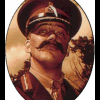
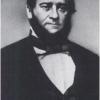

.thumb.jpg.0bac681e0da8e4ed7557610e98fda908.jpg)
